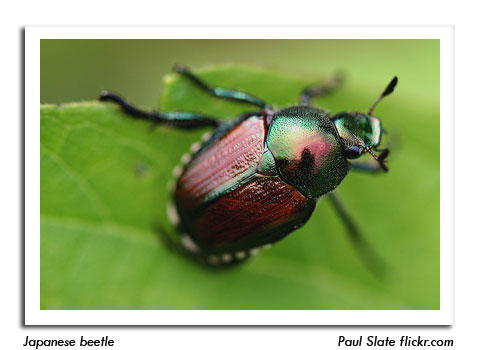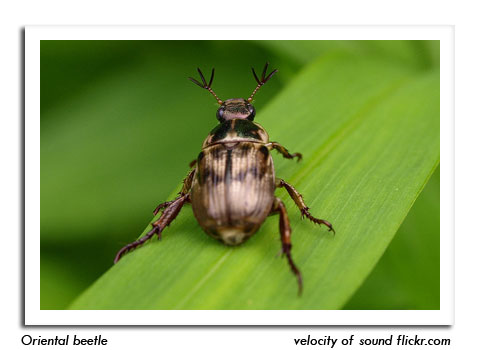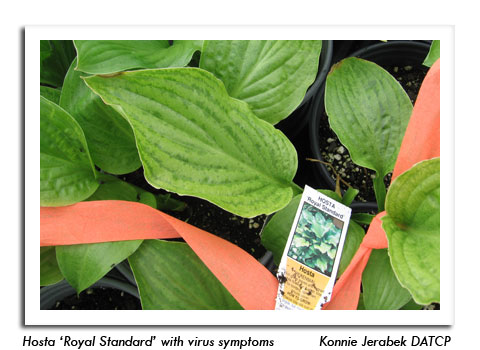
 |
|
|
Nursery
Volume 55 Number 18 Date 11/19/2010 JAPANESE BEETLE: The number of beetles trapped at Wisconsin nurseries decreased for the second consecutive year. The annual survey yielded 16,079 beetles in 127 traps, a 68% decline from 51,035 beetles collected in 2009. High counts of 201 or more beetles per trap were registered in Grant, Kenosha, Rock, Walworth and Waukesha counties, while moderate counts of 51-200 beetles were found in Columbia, Dane, Eau Claire, Iowa, Marquette, Racine and Sauk counties. Nineteen counties averaged fewer than 50 beetles per trap. As previously noted, their recent decline in southern Wisconsin may be due to an increase in natural enemies that regulate beetle populations. REJECTED NURSERY STOCK: Nursery stock intended for export may be rejected if found to be infested with certain regulated insects or diseases. Some of the plants included in this category in 2010 were ash with oystershell scale, arborvitae and yews rejected due to Fletcher's scale, Austrian pines with pine shoot beetle and Zimmerman pine moth, birch with bronze birch borer, euonymus with winged euonymus scale, maple with cottony maple scale, spruce with Rhizosphaera needlecast, viburnum with viburnum crown borer, white pine with white pine weevil, and wild cherry with black knot. ORIENTAL BEETLE: The total number of Oriental beetles collected at garden centers this year was 19. Ten were trapped in Ozaukee County, four in Kenosha County, two each in Grant County and Milwaukee counties, and one in Washington County. No beetles were collected in traps in Brown, Columbia, Dane, Green, Green Lake, Iowa, Rock and Sauk counties. The annual total of 19 beetles represents an increase from 11 in 2009 and two in 2008. VIRUSES: Standard inspections found an abundance of viruses again this season. Hosta virus X (HVX) was encountered most frequently, noted on the hosta varieties 'Albo marginata', 'Aurea marginata', 'Fortunei', 'Funkia', 'Sum and Substance' and 'Undulata'. Other viruses detected were Arabis mosaic virus (ArMV) on hosta, cucumber mosaic virus (CMV) on astilbe and clematis, rose mosaic virus (RMV) on tea roses, tombusvirus on clematis, and tobacco rattle virus (TRV) on anemone, barrenwort, bleeding heart, bluebells, delphinium, Oriental lily and peony. All nursery stock expressing viral symptoms was removed from sale and destroyed. --Liz Meils, DATCP Nursery Inspector 


|
|
|